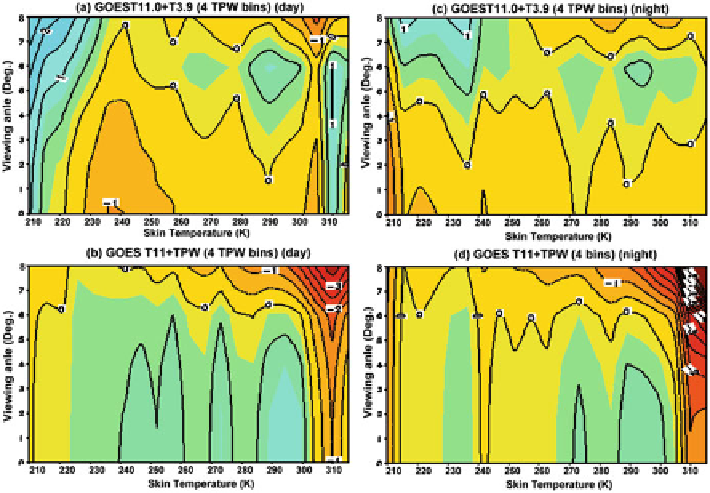Environmental Engineering Reference
In-Depth Information
Fig. 19.13
Bias errors of the regression analysis with water vapor bins are given for daytime (
left
)
and nighttime (
right
)
19.5 Tests and Applications with Real GOES Observations
19.5.1 Diurnal Temperature Range Derivation and Studies
Diurnal temperature range (DTR) is an important index of climate change (Karl
et al.
1984
) and is susceptible to urban effects (IPCC
2001
). As stressed by
Braganza et al. (
2004
), mean surface temperature alone is not as useful an indicator
of climate change as the change in daily maximum and minimum temperatures.
Trends in mean surface temperature are due to changes in either maximum or
minimum temperature, or relative changes in both. The recently reported surface
warming over land is associated with relatively larger increase in daily minimum
temperature rather than in maximum temperature (Karl et al.
1993
; Easterling et al.
1996
). Most information on DTR came from station observations of surface air
temperature (SAT) or from numerical model simulations. Station observations are
sparse, unevenly distributed, and suffer from differences in elevation, time of
observation, and nonstandard sitting (Peterson
2003
). The use of satellite-based
estimates of DTR can provide consistent information over large areas (Gallo and
Owen
1999
). The high temporal resolution of geostationary satellites like GOES

Search WWH ::

Custom Search